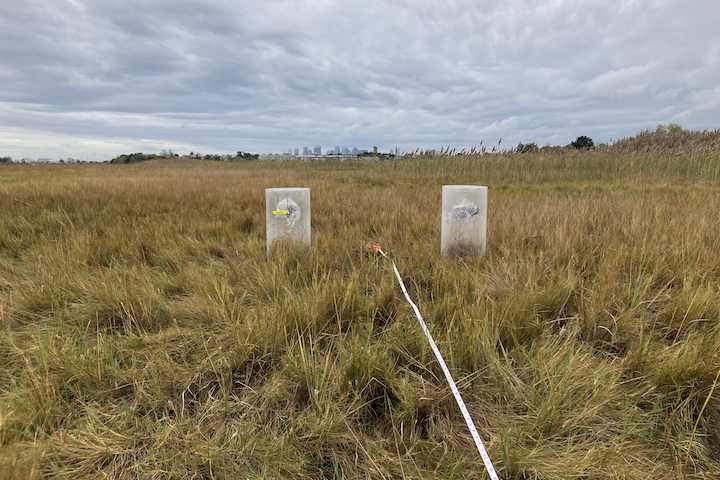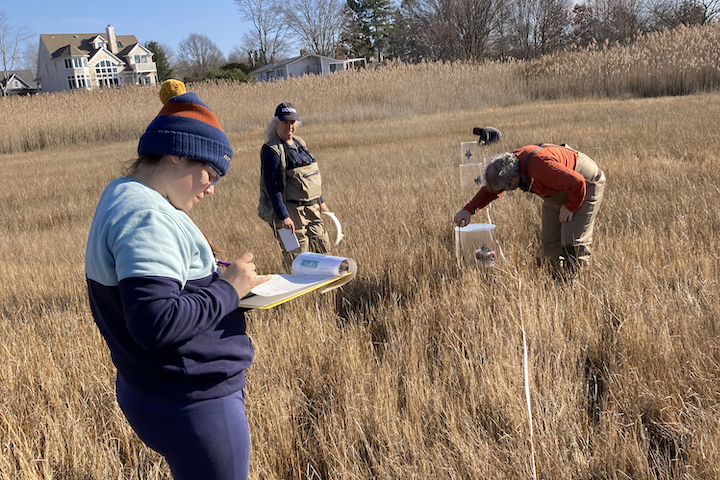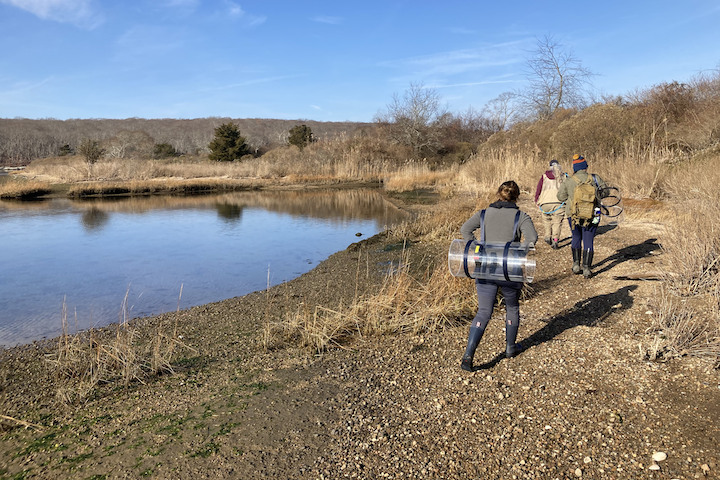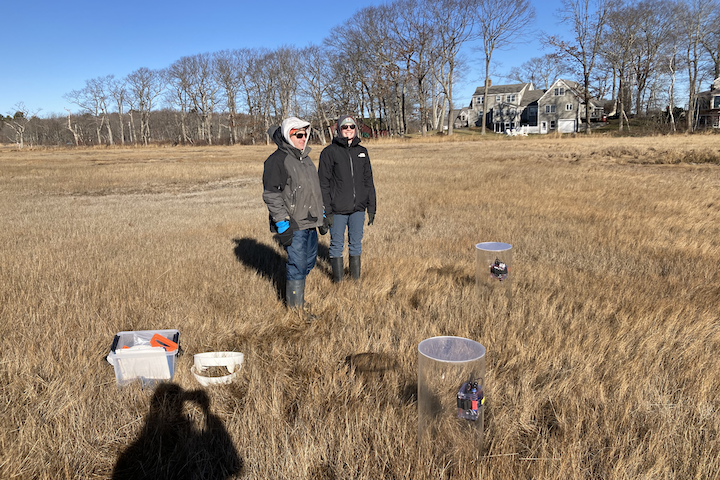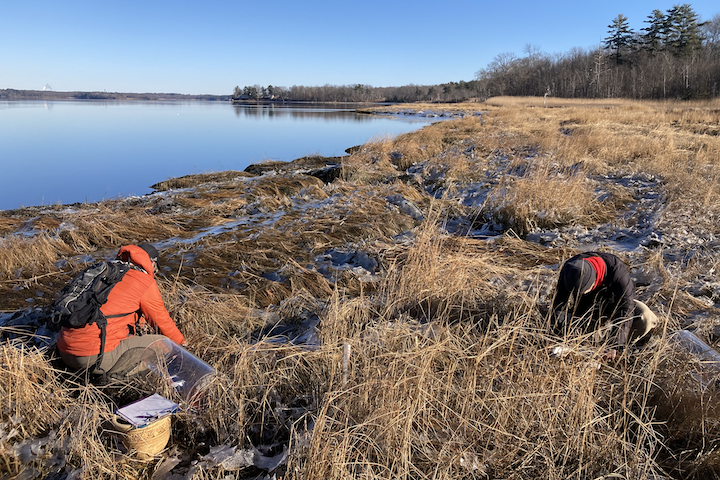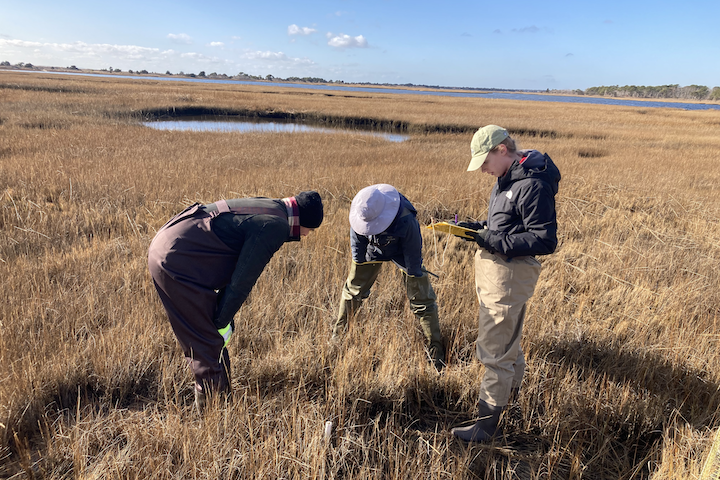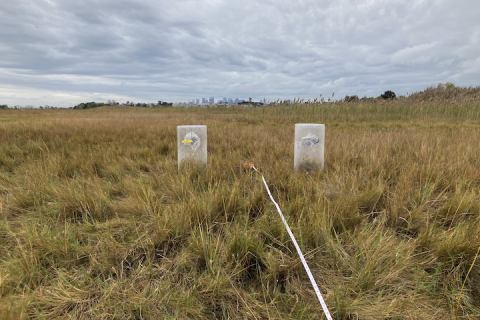
Across all five New England reserves, this project team will deploy a novel sensor package to measure greenhouse gases and develop a salt marsh greenhouse gas monitoring protocol for reserves and other practitioners to enhance understanding of salt marsh carbon cycling.
Salt marshes sequester more carbon per unit area than any terrestrial ecosystem and are an important component of “blue carbon” – the atmospheric carbon captured and stored by marine ecosystems. However, salt marshes are also experiencing numerous stressors that compromise their function. To understand the role salt marshes play in climate change mitigation, and the effects of climate change and restoration efforts on carbon cycling, it is essential to quantify the fluxes of greenhouse gases such as carbon dioxide and methane. Currently, there is a severe lack of salt marsh greenhouse gas flux data, as technologies for measuring these fluxes are logistically challenging, often destructive to marshes, and cost prohibitive.
This project addresses the technological and scientific knowledge gaps by providing intended users with an easy to use, non-invasive, cost-effective, novel sensor package that will enable high resolution carbon dioxide and methane flux data collection. The team will test the current sensor model packages at all five New England reserves and incorporate user suggested changes to increase the ease and efficiency of flux measurements. The team will then develop a universal protocol for deploying these sensors in combination with ongoing system-wide monitoring throughout the Reserve System.
Robinson Fulweiler and Lena Champlin give a short introduction to "Testing carbon dioxide and methane sensors for monitoring salt marsh resilience and restoration."
